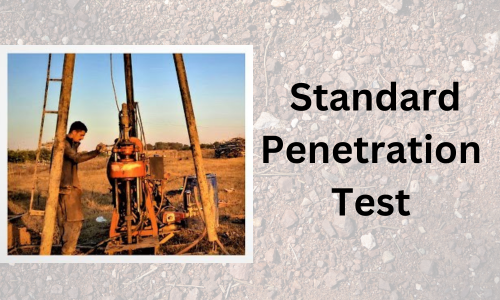
A Complete Guide to Standard Penetration Test (SPT)
The Standard Penetration Test (SPT)
The Standard Penetration Test (SPT) is a widely used soil investigation method that determines the subsurface conditions and soil properties for construction projects. Where soil conditions vary significantly, SPT plays a crucial role in geotechnical studies. This guide will provide insights into the SPT process, its significance, and how it complements other tests like the ERT Earth Resistivity Test and Non-Destructive Testing (NDT).
What is the Standard Penetration Test (SPT)?
The Standard Penetration Test (SPT) is a field test conducted to evaluate the soil’s bearing capacity and density. It involves driving a split spoon sampler into the ground using a hammer of standard weight and recording the number of blows required for penetration. The SPT N-value obtained from the test helps engineers assess soil strength and suitability for construction.
Why is SPT Important?
1. Soil Strength Analysis – SPT helps determine the soil’s ability to support structures.
2. Foundation Design – The test provides essential data for designing stable foundations.
3. Liquefaction Analysis – In seismic-prone areas, SPT is used to assess soil liquefaction potential.
4. Cost-Effective Method – Compared to other geotechnical investigations, SPT is an affordable and reliable technique.
The Process of Conducting an SPT Test
1. Drilling a Borehole – A borehole is drilled at the test location.
2. Driving the Sampler – A split spoon sampler is driven into the ground using a standard hammer.
3. Recording Blow Count – The number of blows required to penetrate the soil at specific depths is recorded.
4. Analyzing Data – The collected data is used to assess soil characteristics and make engineering recommendations.
ERT Earth Resistivity Test and Its Role in Soil Testing
The ERT Earth Resistivity Test is another critical geotechnical investigation method used to measure soil resistivity. This test is essential for assessing the soil’s ability to conduct electrical currents, which is crucial for grounding system design and detecting subsurface variations. Combining ERT with SPT enhances soil analysis accuracy, providing comprehensive data for construction planning.
Non-Destructive Testing (NDT) for Structural Assessment
While SPT focuses on soil testing, Non-Destructive Testing (NDT) is crucial for evaluating the integrity of existing structures. NDT methods like ultrasonic testing, ground-penetrating radar, and radiographic testing help identify defects in materials without causing damage. Engineers often use NDT alongside SPT and ERT to ensure the overall safety and stability of buildings and infrastructure.
The Standard Penetration Test (SPT) is a fundamental part of geotechnical investigations, helping engineers design safe and stable structures. By integrating SPT with advanced testing methods like the ERT Earth Resistivity Test and Non-Destructive Testing (NDT), construction professionals can make well-informed decisions for their projects. If you need reliable soil testing and geotechnical services, consider expert solutions from FITPL.

